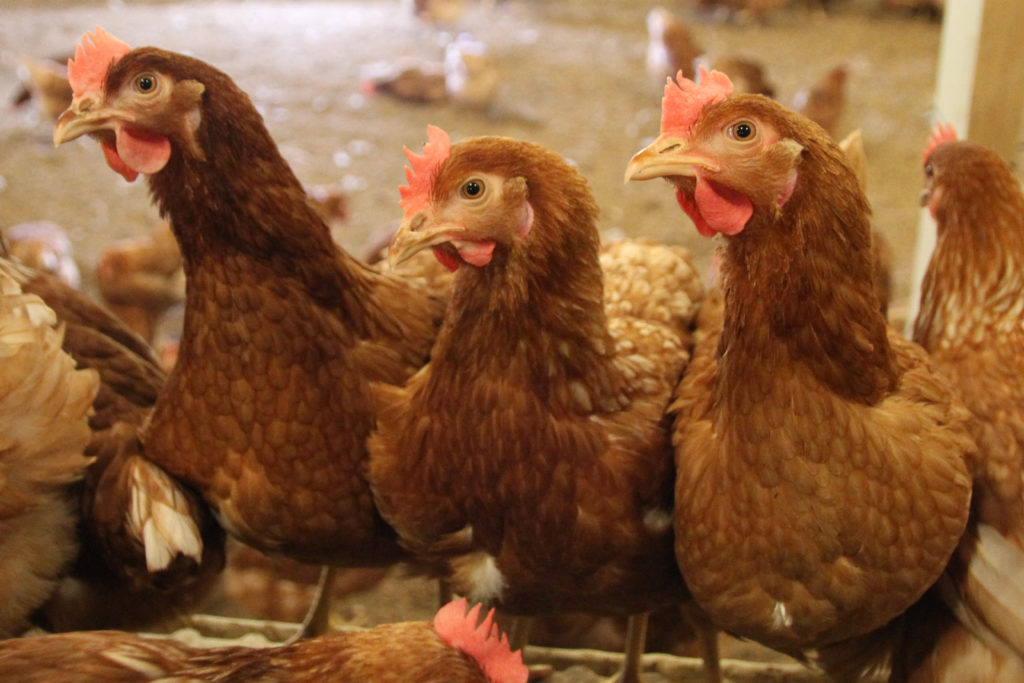
Free range hens in their shed at Langraw Farm, near St Andrews. Image: Matt Cartney/Crown Copyright.
The flu season is here and it’s one of the worst on record. With friends and colleagues getting sick all around us, washing our hands and covering our mouths when we sneeze is crucial to stop the virus dead in its tracks.
While we can’t catch the flu from our beloved dog Rex, we can pick it up from other animals and they can catch it from us too.
Influenza pandemics occur when a new strain of the flu virus is transmitted to humans from another animal species. Pigs, chickens and ducks are considered prime candidates for the emergence of new human strains of influenza.
Fortunately, we haven’t detected the H5N1 avian flu virus in birds here in Australia, but we’ve seen the devastating effects of outbreaks in birds in other parts of the world, such as the Philippines. But if it did occur in Australia, the effects on our economy and poultry industry would be significant.
That’s why we have one of the world’s designated reference laboratories for tracking bird flu at the Australian Animal Health Laboratory (AAHL).
Philippines officials have sent samples to AAHL for confirmation of the disease and have asked AAHL to run tests for further virus characterisation. This provides a more detailed picture of the relationship to other circulating influenza virus strains, allowing better informed decisions on how to respond to the outbreak.

Lung respiratory tissue from chicken infected with H5N1 bird flu showing virus (red) in epithelial cells.
In the last year alone AAHL has similarly worked with Nepal, Myanmar, and Laos to investigate bird flu outbreaks in farmed chickens, which greatly impact the food security and livelihoods of people in many affected countries.
Our expert Frank Wong keeps us up to date about the flu viruses infecting animals around the world and contributes to ongoing investigations into all aspects of the disease.
AAHL is responsible for testing samples collected from wild birds in Australia throughout the year. This information is used to make informed risk assessments around the likelihood of bird flu crossing over from the wild population to our farmed birds.
As part of this system of preparedness, we ensure that our services are world class. We recently received official endorsement as a Collaborating Centre for Diagnostic Test Validation Science in the Asia-Pacific region with partners from the University of Melbourne and Massey University, New Zealand.
This new Collaborating Centre will ensure that tests used for the diagnosis of animal diseases are accurate, efficient and updated as viruses and diseases evolve.
This is a new and important feather in our cap, and another recognition of the important role we play in protecting the health of our livestock industry, our export markets and biosecurity.


Find out more about AAHL
We help protect Australia’s multi-billion dollar livestock and aquaculture industries, and the general public, from emerging infectious disease threats.